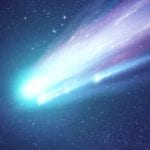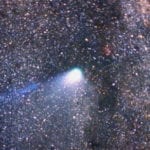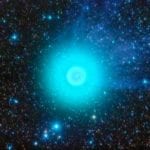 Weird Stuff
Weird Stuff  Weird Stuff
Weird Stuff  Animals
Animals 10 Inspiring Tales of Horses Being Human
 Mysteries
Mysteries Top 10 Haunting Facts About the Ghost Ship MV Alta
 History
History 10 Surprising Stories About the Texas Rangers
 Humans
Humans 10 Philosophers Who Were Driven Mad by Their Own Theories
 Miscellaneous
Miscellaneous 10 Video-Game-Worthy Weapons and Armors from History
 Weird Stuff
Weird Stuff 10 Psychics Who Accurately Predicted Wartime Events
 The Arts
The Arts 10 Pieces of Art Inspired by a Broken Heart
 Health
Health 10 Science Fiction-Sounding New Medical Treatments
 History
History 10 Surprising Facts About the Father of Submarine Warfare
 Weird Stuff
Weird Stuff 10 Times Real Laws Were Based on Bizarre Hypotheticals
 Animals
Animals 10 Inspiring Tales of Horses Being Human
 Mysteries
Mysteries Top 10 Haunting Facts About the Ghost Ship MV Alta
Who's Behind Listverse?

Jamie Frater
Head Editor
Jamie founded Listverse due to an insatiable desire to share fascinating, obscure, and bizarre facts. He has been a guest speaker on numerous national radio and television stations and is a five time published author.
More About Us History
History 10 Surprising Stories About the Texas Rangers
 Humans
Humans 10 Philosophers Who Were Driven Mad by Their Own Theories
 Miscellaneous
Miscellaneous 10 Video-Game-Worthy Weapons and Armors from History
 Weird Stuff
Weird Stuff 10 Psychics Who Accurately Predicted Wartime Events
 The Arts
The Arts 10 Pieces of Art Inspired by a Broken Heart
 Health
Health 10 Science Fiction-Sounding New Medical Treatments
 History
History 10 Surprising Facts About the Father of Submarine Warfare
10 Lesser-Known Historic Comets
Seeing one of the incredible comets that pass by the Earth is one of the greatest pleasures in life. If we are lucky, we will get to see several comets while we are here on this planet. Some will be barely visible to the naked eye, while others will be objects as bright as Venus or the Moon. It is the latter that we remember most and to which we give the name “Great Comet of (fill in the year).” Here are 10 of the lesser-known comets that, in one way or another, live up to the title of “great.”
10Comet Bennett

Probably the best-remembered comet from the 1970s was the very disappointing Kohoutek, which failed to reach its much-anticipated level of brightness in 1973–1974. However, there were two very good comets to grace the skies in the ’70s—Comet West and the lesser-known Comet Bennett. Though seldom mentioned in the same breath as the fantastic Comet West, Comet Bennett put on a spectacular display from February through May 1970.
Comet Bennett was a bright morning comet visible to anyone willing to brave the cold to see it. And it was worth the trouble, as it brightened to magnitude zero. The astronomical magnitude scale is a measure of how bright an object appears in the night sky, with zero being as bright as the summer star Vega. Objects with a negative number are even brighter and easier to see. For comparison, the brightest planet in the night sky is Venus, at -4 magnitude. Comet Bennett had a long, fantastic tail extending behind it, which was actually two tails twisting together. Though it faded from view by mid-May, it is remembered by some astronomers as one of the most impressive comets of the 20th century. Comet Bennett will be back to see us (or rather, for us to see) in 17,000 years.
9The Headless Comet Of 1887
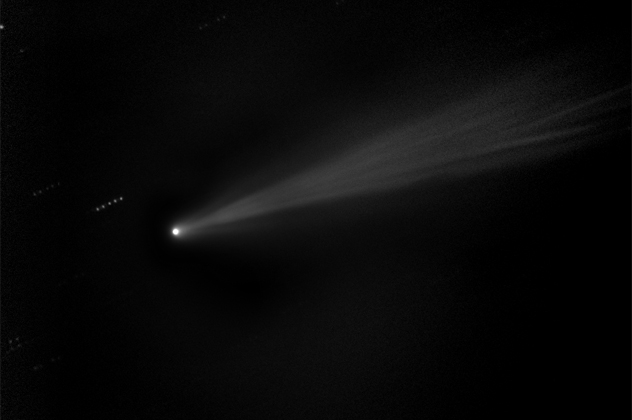
Viewable for a very short time in the Southern Hemisphere, the Great Southern Comet of 1887 was remarkable for one bizarre reason—it had no nucleus, or “head.” The nucleus is the heart of the comet and is a solid block of ice and other material which is often referred to as a “dirty snowball.” The nucleus creates the coma—the cloud of dust surrounding the nucleus—and that accounts for the dust tail that is “blown” by the solar wind.
How is it possible that the Great Southern Comet of 1887 was so spectacular to see, but did not have a visible coma? Scientists have a few theories as to why the head of the comet may not have shone very brightly, but none of them are entirely conclusive. Whatever the explanation, the lack of a head gave the comet its second name, the “Headless Wonder.” Even though it was not visible for long before it disappeared, it was spectacular to see, with a tail stretching 50 degrees across the night sky.
8Great Comet Of 1861
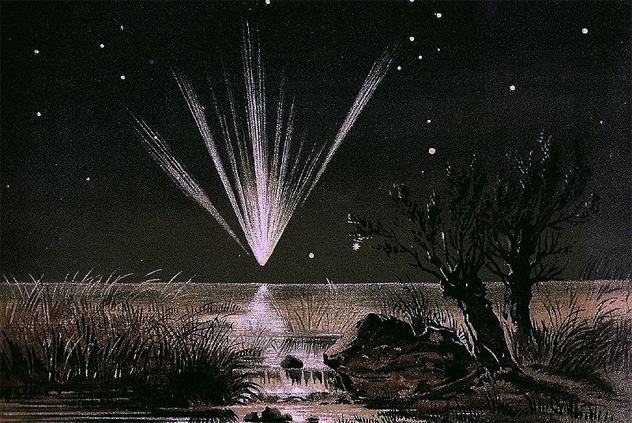
In 1910, the world eagerly awaited the return of Comet Halley. By that point, scientists had been able to study the chemical composition of the tail of dust from Halley’s comet and had determined that it contained, among many other chemicals and elements, cyanide gas. Though the amount of cyanide gas was very low, the press spread fears that on May 19, 1910, when the Earth passed through the comet’s tail, the deadly gas would kill all life on Earth. Of course, the night came and went, the Earth passed through the tail of the comet, and the next morning the planet was still full of life.
Forty-nine years earlier, the Earth had another very close encounter with a comet—the Great Comet of 1861, also called Comet Tebbutt after the man who discovered it—farmer and astronomer John Tebbutt. On May 13, 1861, he spotted a fuzzy object in the night sky above the little town of Windsor, near Sydney, Australia. Not recognizing any such nebula or star cluster in that area of the sky, he sent a letter to the Government Astronomer at Sydney University, who verified that Tebbutt had done what few humans ever achieve—find (and be named for) a comet. Tebbutt’s discovery was published in the Sydney paper, and word of the new comet started to spread around the scientific world.
As it slowly moved into the Northern Hemisphere, Comet Tebbutt was visible for most of the summer of 1861. It steadily grew in brightness, eventually reaching magnitude zero, and on June 29th, the Earth passed right through the tail of the comet. It brightened to magnitude -4 (as bright as Venus), with a tail that stretched 120 degrees across the sky. To give you a rough idea of how amazing that is, remember that 90 degrees from the horizontal (the horizon) is the point directly overhead (the zenith). If the head of Comet Tebbutt had been at the horizon, its tail would have arced across the sky well past the zenith. Just as it would in 1910, the Earth survived its close encounter with the tail of the Great Comet of 1861.
7Comet Arend-Roland
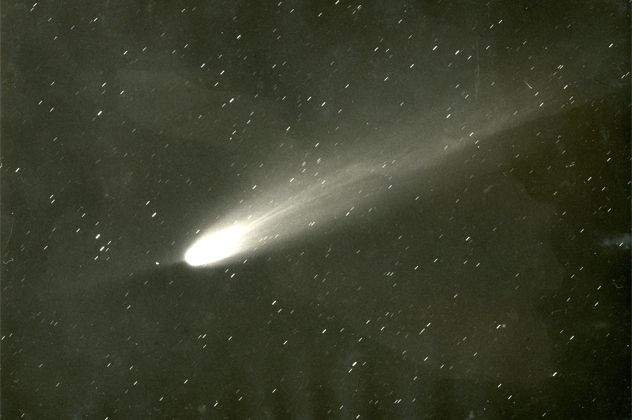
Discovered in 1956, Comet Arend-Roland was the first great comet visible in the Northern Hemisphere since the 1910 appearance of Halley’s Comet, and today it’s thought of as the first great comet of the modern era. In April 1957, the comet passed closest to Earth and brightened into an amazing celestial object with a magnitude of zero and a tail stretching 30 degrees. It then showed a rare site: a bright anti-tail—a tail pointed toward the sun.
In his book Cosmos, astronomer Carl Sagan recollected one of the great stories of Comet Arend-Roland. Sagan was a graduate student attending the University of Chicago when Comet Arend-Roland was visible. He received a phone call one evening from an inebriated man who wanted to speak to a “shtrominer” about why there was a fuzzy ball of light in the sky above his outdoor party. Why did the ball of light disappear when you looked at it, then reappear when you averted your gaze? Sagan explained to the man that he was seeing Comet Arend-Roland. The man asked Sagan, “what’s a comet,” to which Sagan replied, “a snowball one mile across.” Not about to believe such nonsense, the man then asked Sagan if he could speak to “a real shtrominer.”
6Comet Encke
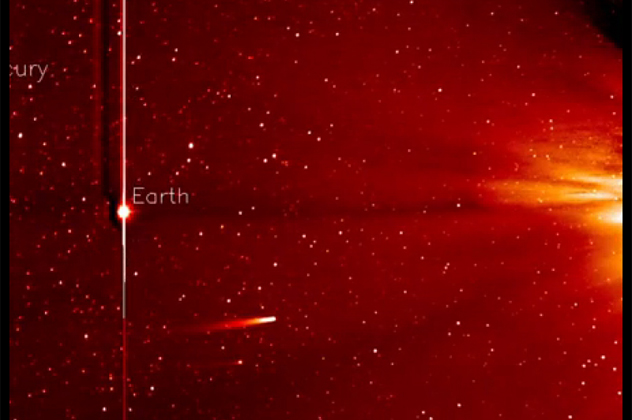
Comet Encke makes this list for several significant reasons. First, it is the periodic comet with the shortest known orbit around the Sun, only three years. Comet Encke is just one of many periodic comets, most with orbits that will bring the comet past Earth several times during an average human life span. Periodic comets are interlopers from the Oort cloud and Kuiper belt, an area filled with comets and asteroids which lies past the orbit of Neptune. From there, the periodic comets make frequent visits to Earth as they orbit the Sun. Because it comes back to visit our planet on a regular basis, Comet Encke is sometimes referred to as “old faithful.”
But sometimes, the comet is not so friendly to Earth. Some scientists believe that Comet Encke is related to many historical Earth impacts, including the 1908 Tunguska explosion. Some scientists even believe that Comet Encke may be the source of inspiration for the swastika. A rare Chinese comet atlas from the fourth century B.C. was discovered in 1978, and among the many drawings of comets was one with a very recognizable swastika shape.
Had the ancient Chinese observed Comet Encke in 2007, they would have been amazed to find that it had no tail at all—it had “fallen off” after a close encounter with the Sun. Comet Encke is also responsible for the annual Taurid meteor shower in early November, when the Earth passes through the remnants of dust left behind by the comet’s tail.
5Comet Swift-Tuttle
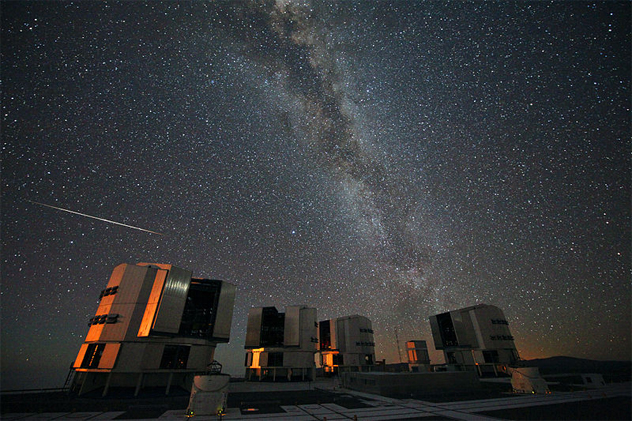
You may not have heard of Comet Swift-Tuttle, but astronomers and scientists have, and they worry a great deal about this comet. And for good reason—Comet Swift-Tuttle has been called “the single most dangerous object known to humanity.”
Comet Swift-Tuttle is the largest of the periodic comets, those that make regular and relatively short-term visits to our Sun and Earth. It’s an old acquaintance of man. Scientists believe that there have been recorded sightings of its regular 120-year orbit for thousands of years. The last time it was back to see us was in 1992, not 1982 like astronomers expected. We now know its true orbital period, which leads to the problem: The next time Comet Swift-Tuttle is due to return is 2126, not 2116—putting it much closer to the Earth’s orbit. For a time, scientists were actually worried that it might impact the Earth.
The comet’s large nucleus is what gives scientists concern. At over 26 kilometers (16.2 mi) in diameter, Comet Swift-Tuttle rivals the size of previous comets that have hit the Earth—impacts that have destroyed almost all life on the planet. Even though we now know the comet will miss us in 2126, it will be close enough to Earth to provide those lucky enough to see it with a spectacular show in the night sky. And we are still keeping a close eye on the comet, just in case it decides to change its mind between now and 2126.
On a more pleasant note, because it comes back to visit Earth on a routine basis, the Earth regularly passes through remnants of its tail. The dust left behind by Comet Swift-Tuttle creates one of the best and most reliable astronomical events each year—the Perseid meteor shower.
4The Great Comet Of 1811
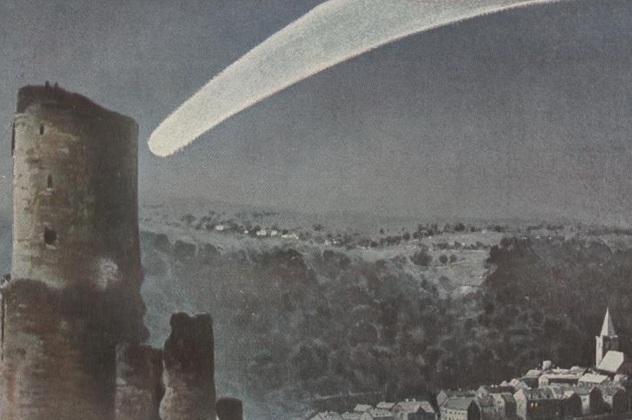
Also called Comet Flaugergues, this comet was first seen in April 1811. The comet was visible with either the naked eye or a telescope for an amazing 17 months, spanning well into 1812. At its brightest, Comet Flaugergues was magnitude 1 and had a tail stretching 25 degrees.
While the Great Comet of 1811 was called Comet Flaugergues, it is best remembered as either “Tecumseh’s Comet” in the United States or “Napoleon’s Comet” in Europe. In 1811, people were beginning to look at comets and other astronomical events with less fear and superstition. However, Comet Flaugergues worked hard to overcome that progress by coinciding with the greatest onset of earthquakes in US history—the New Madrid earthquakes, a series of thousands of quakes that spanned from December 1811 to March 1812. Two of the earthquakes exceeded 8.0 on the Richter scale.
At that time, the great Shawnee leader Tecumseh (his name just happened to mean “Shooting Star”) was bringing together various tribes in a confederacy to fight back against the United States for seizing Native American land. As Tecumseh was meeting with other tribal leaders just 80 kilometers (50 mi) from the epicenter, the first quake (magnitude 8.1) hit the New Madrid, Missouri area.
As for Napoleon, he apparently embraced the comet as a sure sign of the justness of his reign, but it came in the years when he would embark on his worst military decision, the invasion of Russia. In fact, a total of three comets spanned the time between Napoleon’s invasion of Russia and his retreat.
3The Comet Of 1472
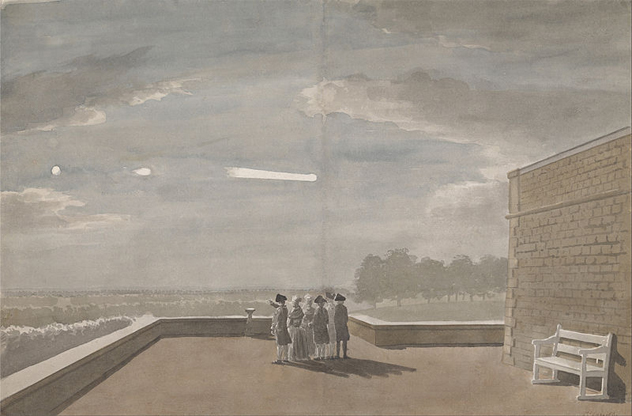
In 1472, Leonardo da Vinci was at the height of his profession and Columbus was still 20 years away from discovering the New World. The year also marked the appearance of one of the great comets of the tail end of the Middle Ages.
Scientific observations of comets were in their infancy in 1472 when the comet appeared. Scientists of the day tried to determine its distance from Earth, the size, length, and direction of the comet’s tail, and the size of its nucleus. Their measurements and calculations left much to be desired, but still, this was cutting-edge science for the time. After all, the telescope would not appear for more than another 100 years.
One of the early astronomers who studied the comet of 1472 was a German mathematician named Johannes Regiomontanus. Not only did he study the comet, he also wrote down what he observed. The comet had come along at just the right time for Regiomontanus. The printing revolution was just taking off all over Europe, and Regiomontanus’s notes became De Cometis, one of the first astronomy books ever published.
Regiomontanus wasn’t the only one watching the comet. An Italian philosopher and physician named Angelo Cato de Supino claimed that the comet was as bright as the full Moon and had a tail over 30 degrees long. The comet was also being studied by the Koreans and the Chinese. The Chinese described it as a “broom star” and recorded that it “even appeared at midday.” The comet would be visible for 59 days and would ultimately reach -3 magnitude in brightness.
2Great Comet Of 1618
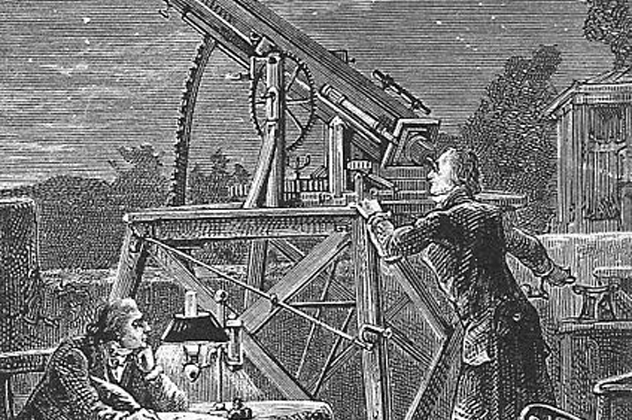
Almost 150 years after the appearance of the Great Comet of 1472, Europe was enthralled with everything that could be observed, studied, recorded, and analyzed. But not everyone was getting with the times. In Prague, Protestants were tossing Catholic noblemen out of windows and triggering the Thirty Years’ War. But while all this was happening, Johannes Kepler was discovering the third law of planetary motion. Nobody paid much attention to what Kepler was up to, including the Catholic Church (fortunately for Kepler). But everyone noticed the comet that graced the sky in 1618.
Known as “the Angry Star” because of its reddish color and very long, menacing tail, the Great Comet of 1618 was visible for seven weeks, which was plenty of time for 17th-century Europeans to get excited about this visitor from beyond. One person who certainly got excited about the comet was Galileo, who saw this as a perfect time to refute Aristotle’s claim that comets were “fiery objects.” He claimed that comets were not like planets with regular circular orbits (wrong), and that comets were not even real objects—they were just appearances (wrong and wrong again). Even Galileo wasn’t right all the time.
But what really caught everyone’s attention was that in England, King James I had taken notice of the comet, and he even penned a poem about it. In his own kingly manner of prose, his Majesty told his subjects to calm down, because it was only a comet. Even if God Almighty sent the comet, he reasoned, your typical Englishmen shouldn’t make too much of it, and should “keep his rash imaginations till he sleep.”
1Comet Donati
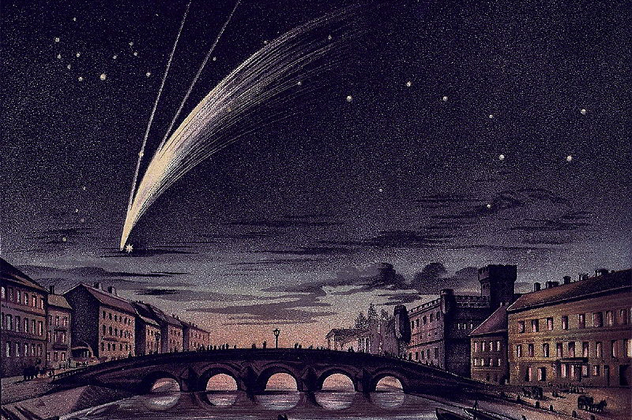
Comet Donati has two major distinctions that make it stand out in history. First, it is also known as “Lincoln’s Comet” because it was seen by the soon-to-be US president. When Lincoln observed Comet Donati in 1858, he was just a young Senate candidate from Illinois. Lincoln was said to have “greatly admired this visitor” and spent a considerable amount of time watching the comet in the night sky. Second, and of even more historical significance, Comet Donati has the distinction of being the first comet ever photographed.
In 1839, photography was invented by Louis-Jacques-Mande Daguerre, and astronomers quickly realized the potential applications of photography to their science. It didn’t take astronomers long to start snapping pictures of everything in the sky. The first successful daguerreotype of the Moon was made in 1840. By 1858, when Comet Donati became visible, the daguerreotype process was being improved with the wet collodion method. George Bond, an astronomer at Harvard, used a telescope and the collodion photography method to record the first-ever image of a comet. It wasn’t much to look at, but there it was. History had been made.
Besides these two historically important distinctions, Comet Donati was also a spectacular comet to observe. The night sky of the 1800s was not yet obscured by the modern curse of light pollution. People around the world, especially in the Northern Hemisphere, were in awe of the many spectacular comets that came along in the 1800s. It must have been marvelous to observe so many great comets in such a short period of time, under such perfect, dark skies.
Patrick Weidinger first read about the return of Halley’s Comet (which would reappear to Earth viewers in 1986), when he was ten years old in 1969. He could not believe he would have to live to the old age of 27 to get to see it. He did see it, but the comet was very disappointing compared to the 1910 visit. He hopes to be around in 2062 when Halley’s comet returns.
